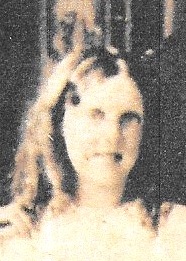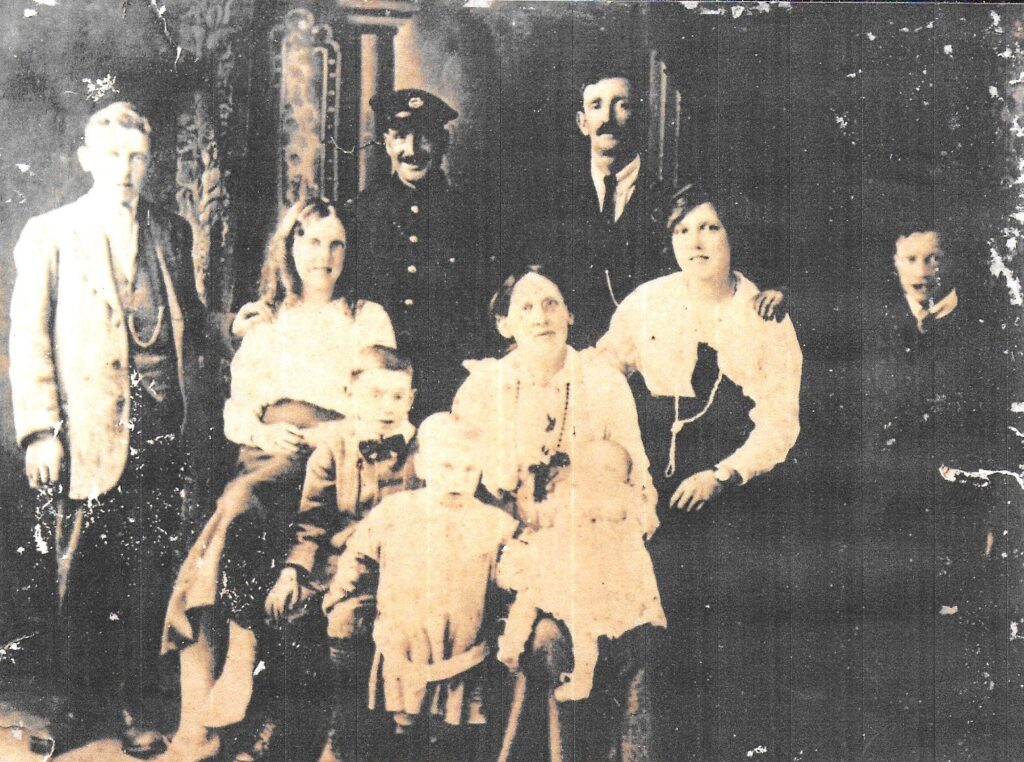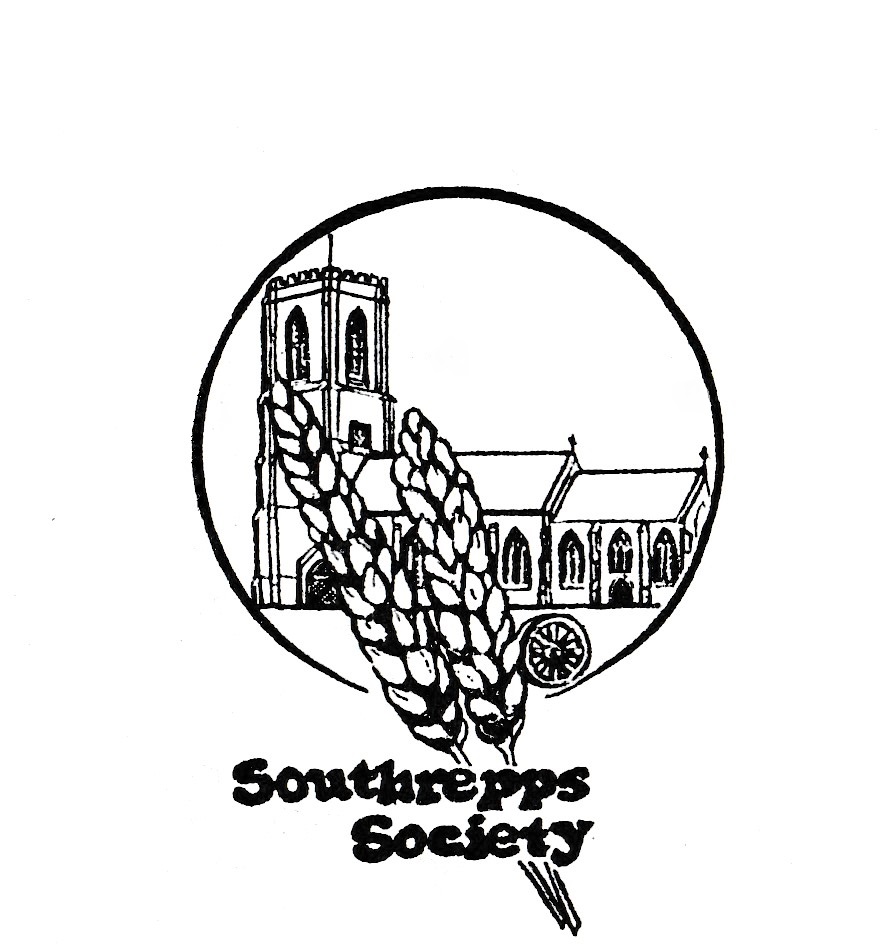Autobiographical

Audrey Grey was born in Snape Suffolk in 1905. Her father was Edward Grey RN. Her mother Alice Cubitt. She married Ronald William Veness in 1928 in Sedlescombe Sussex.They had a daughter Pamela, He was a policeman. She lived for many years in London. On her return to Southrepps she lived at 21 High Street and died in 1974.
IN DAYS GONE BY “SOUTHREPPS “
In 1914, at the outbreak of war, we moved back to Norfolk where my father had lived in this village of Southrepps as a boy. I have wondered often whether he discovered, as, indeed, have I, that one should never go back. Dreams and aspirations, memories and associations are delightful in retrospect but only in the mind, seldom in reality. Even the poverty which one had to endure because of ill-health in those days from the bread-winner, only served to bring folks closer together and shared troubles were troubles halved. What a pity that this very fine sentiment seems to me to have gone out of the window with the advent of the Welfare State, admirable though it is. So here we were in 1914 back in the village from which my father had run away to sea as a boy to the desolation and heartbreak of his mother. He had learned at his father’s knee to play the violin. His father had been nicknamed “Fiddler Grey” and many are the times I have heard my father tell of his prowess with this instrument and the demands upon his time to play at Harvest Frolics and Barn Dances around the neighbouring villages. When the corn had been gathered in, the farmers would hold what they called a “Harvest Frolic” for all the employees and their families to share and there would be good beef and beer to eat and drink and the fiddle to which they danced their jigs and step dances in their studded boots on the brick floors of the barns. The beer was potent – a lot of it home-brewed.
Here I think I should mention a little about the methods of farming In those days.
There was no modern equipment or implements and many a field had to be cut by scythe and the corn lay in neat swathes until it was dry enough to be gathered into sheaves and then stood up in what were called stooks or shocks until it could be gathered on to a farm wagon pulled by sturdy carthorses whose coats and harness shone and whose tails were tied with brightly coloured ribbons. The sheaves were lifted up expertly from the ground on a pitchfork and handed up to another one or two men on the wagon to arrange. They were then stacked up and awaited the arrival of the threshing machine – a great adventure for children – which called at the various farms. Harvest was an exciting time. Some farmers were fortunate enough to possess a sail cutter – an instrument resembling a windmill with large teeth on the sails and as they rotated they swept the corn on to the blades and pushed it off the rear. Rabbits hid in the cornfields and there were always plenty of people with dogs and cudgels to catch these terrified creatures as they dashed from the refuge of the last remaining stalks of corn and many a home had a good rabbit pie or stew for the next day. In those days the farmer was obliged to stand or fall by his own efforts and there were no subsidies.
It was great fun to watch the milking going on; butter being made, and to take a can with a handle over the top for a pen’orth of “skim” – the residue left when the cream had been removed for butter making. There was no free milk or meals in those days and on many occasions we could not go to school because we either had no shoes to walk the one mile, or they were beyond repair. Hand-me-downs were the order of the day and the eldest was fortunate indeed to get anything at all that was new. There were no family allowances or pensions and there were many families in the village who, like ourselves through illness, must have been living on the breadline. It was a positive disgrace to be “living on the parish”! I often think that people do not sufficiently appreciate the privileges and benefits which they are given today and wonder how they would re-act to the hardships and deprivations which were endured in those days, but I think that they made men and women of us all.
I recall that the Rector of the parish when we first arrived was Sir Frederick Sullivan. The rectory was and is today a charming residence; it’s lawns were like velvet and under the trees in the Spring were masses of daffodils and narcissi. We children used to wait for dusk and then naughtily creep through the large white gate and gather a handful of blooms. Sir Frederick was a tall and dignified figure and strolled around the village in a sort of condescending way in his square topper with his diminutive lady by his side with her umbrella or sunshade and the girls had to curtsey and the boys to pull at the peaks of their caps. This gentleman was succeeded by Reverend Humphrey Barclay and what a contrast! Here was a man with a heart as big as the house in which he lived. No closed gate guarding the dancing daffodils, but a gate and a house which were open to all-comers and I am certain that no one suppliant was ever turned away from his door empty handed. He opened his heart, his house and his purse to the poor; set up a Reading Room and Social Club for the young and the Church was filled to hear his sermons under the light of the oil lamps following the ringing of the bells calling the village to worship. Here was a man who practiced rather than preached religion and has been known to walk into the ‘pubs’ on a Sunday – following his service – and to toss the contents of a sack on the bar floor with the remark “Anyone like pigeon pie?”
There were two public houses in the village between which there was great rivalry. At the back of the. New Inn was “The Long Room” and I have danced there many an old-fashioned waltz, polka and Sir Roger de Coverley to the music sometimes of the piano and sometimes to the accordion played by a local man. Several of the inhabitants had their own particular party pieces which they trotted out on each occasion but somehow one never got tired of hearing them. On other occasions there were rival social functions in the Top Room at the Vernon Arms where some of the local men would vie with one another in the step dance.
The village was almost self-supporting and we had practically everything we needed. There was a butchers; a bakers; a shoe repairer; a carpenter and a harness maker’s shop and a village blacksmith. There was also a grocer’s shop which sold everything from bacon cut to order, to a tin tack. I can still see the lady and her assistant who ran this establishment and the huge black tins with their gold lettering announcing their contents as Mazawattee tea, sugar and rice, etc. On the floor were sacks of flour, lentils and so on, which were baled out in scoops and I was always fascinated by the way the blue sugar bag was bounced up and down on the counter until the contents had settled down and the corners could be neatly turned down and a final bang given to it before it was handed over. Almost the same method applied to an ounce of “shag” but in this case it became a cone-shaped packet.
Then there was Birds the Butchers and Drury the Bakers. The bakery was a fascinating place. It was lovely to go in there on any pretext, watch the dough being kneaded in huge containers; slapped out on to a heavily floured board and expertly cut into loaves and set in tins to rise. When cooked, a long flat spade-like instrument was inserted in to the oven and a half dozen or so loaves, crisp and brown, brought out from the depths. These were either delivered to your door or could be purchased direct from the bakery.
There was too the village blacksmith; a muscular man by the name of Riseborough. What a fascinating experience it was on a dark night to see as many as, possibly six huge carthorses waiting in the road to be shod and the rosy glow from the embers as someone pumped the bellows. Into these embers, having first removed the old shoe, the smith would plunge with tongs the piece of metal until it was red hot and then the clang, clang of the anvil as he hammered it into shape. He would then lift the huge hoof and hold it gently but firmly between his knees on his leather apron and file away while the horse stood patiently being shod.
The village boasted its fair share of “characters “. On Saturdays a little man in hard hat, thick pebble glasses and a moustache – Billy Comer – would come around with paraffin. As he stepped aboard his trap, the shafts would tip up until I felt that either the donkey would be strangled or he himself would fall into the roadway, but he always managed to get on his way. Then there was a man who was so polite that everyone called him “Thanker mam”. I did not know his proper name. His conversation was interspersed with this expression and he exchanged paper windmills on sticks for jam jars and rabbit skins so there was a fine old business going on at harvest time and we would all try to get mother to tip out the last of the jam or marmalade in order that we might get a windmill. We were also visited by a little man called “Cockle Joe “ and he brought live cockles to your door on Saturdays.
There was an annual fair which came to the village with its swings and roundabouts and I can still see the naptha flares above the hoopla, roll-a-ball and dart and rock stalls, and hear the blaring sound of the music from the steam horses as they and the gorgeous cockerels whirled round, up and down.
Southrepps, as we knew it in those days, has disappeared with its village “cop” and district nurse – a self-supporting community if ever there was one. The policeman was a father figure and would never dream of sending young people before the “beaks” for minor offences which he would deal with himself on the spot with
a cuff behind the ear or a well directed but harmless boot behind the seat of the pants. Indeed, if he had not done so, half the young population of the village would have been “had up” for one misdemeanour or another – raiding “Sloddy Cubitt’s” walnut and medlar trees and “scrumping “ apples in Brown Dix’s orchard. Then, of course, there was the thrill of “pinching” sweet chestnuts and walnuts from the Warren in the Autumn.
The District Nurse, Nurse Lark, in her whiter than white starched apron, stiff and studded collars, cuffs and waistband, could always be relied upon to wheel out her bicycle and to deliver the many babies which arrived in the village and surrounding areas and to deal competently with every kind of emergency. What a comfort it was to know that she was there to deal with our cuts and bruises.
I have, like my father before me, returned to village I knew so well, but which I no longer recognise. The little shoemaker’s shop “Shummmaker Bill’s” which stood on the corner of the street has disappeared so we shall no longer see him or any successor with a ball of wax and thread and his mouthful of rivets as he worked away in the evenings under the glow of his hanging lamp. No electric light, gas, water or sanitation in those days.
There is now only one public house and no longer does one hear the clank of iron as the men competed in the yard of the Vernon Arms with their quoits amid rousing laughter and cheers. The harness maker’s shop has a curtain draped across it. No need for that in these days of motor and mechanical farm machinery, nor does one need the delightful forge which is now, for me at least, only haunted by the ghosts of those magnificent beasts which clattered and stamped outside as they waited their turn to be shod. The bakery has disappeared and those delightful hot and crusty loaves and gone is the family and personal touch and the thrill of going on Good Friday morning to pick up those lovely spiced hot cross buns. There is no District Nurse and the village “cop” has disappeared.
As I have previously said, the village of Southrepps as I knew it has gone. With the march of time and science, the influx of the motor car, radio and television, the spirit which existed and comradeship has departed. No longer the need for the handclasp of friendship in mutual sorrow or need, deprivation and disaster. What a pity that a lot of youngsters of today have life so easy that there seems to be nothing left for which to strive and they have lost- at least a large number of them – that great standard by which to live.
Audrey Edith Veness.
SO MANY THINGS THAT WE CAN DO,
TO EASE THE TIGHTLY FITTING SHOE,
THE SHOE OF LIFE WE ALL MUST WEAR,
WITH FORTITUDE ITS PRESSURES BEAR,
AND WHEN ON LIFE’S HIGHWAY WE FIND
A FELLOW SUFFERER, LET’S BE KIND,
NOT PHARISEES OUR FACES HIDE,
AND PASS BY ON THE OTHER SIDE.
A.E.V.

